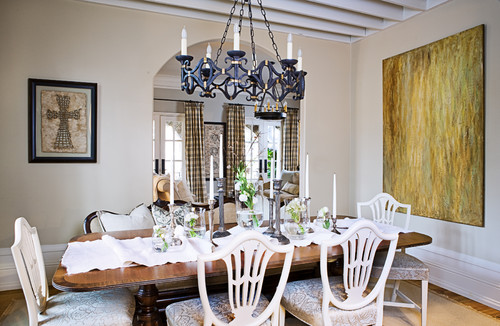The American Home, December, 1942
Much has been written lately on re-purposing a formal dining room to suit the needs of a modern family. Suggestions have been as wide-ranging as pitch the table out altogether and turn it into a playroom, or use it as a craft room or even a billiard room! Examples of families who have transformed their dining rooms are frequently found today in decorating magazines and on internet sites. However, before we pat ourselves on the back and proclaim how clever we modern women are, determined to develop our own sense of style and fashion rather than imitate that of our parents or grandparents, let's take a look at this ad from the December, 1942 issue of The American Home magazine.
Armstrong Linoleum Advertisement, December, 1942
This ad shows suggestions for changing "the laziest room in the house". The cabinets flanking the center buffet are used as a sewing center and an office. The linoleum flooring is touted as being easy to clean and durable. Wouldn't this scheme be easy to replicate in our 21st century dining rooms? Two inexpensive cabinets such as those IKEA sells could easily fit on either side of a credenza or buffet. Note the height and depth differential of the center piece in the illustration. Another design point is that the cabinets have been painted the same color as the walls. Best of all, the room retains its table and seating, providing extra work surface while preserving its original function--a place for family to gather for meals! In the re-purpose versus multi-purpose war, it is easy to see where my allegiance lies.
My formal dining room is used for occasional web surfing via my laptop and ....well, dining. I am far too messy while cooking to serve every meal in the eat-in kitchen! For a change, every now and then, I set the dining room table, dim the chandelier and sit away from the visible chaos of the kitchen. I like the sense of occasion and the ambiance that a softly lit room ( complete with my husband's constant comment " I can't see my food!") gives a meal. So, before following through with a plan to change your dining room into a place only a few family members can use, take inspiration from suggestions made 72 years ago, and design a dining room that everyone can use and enjoy!
























